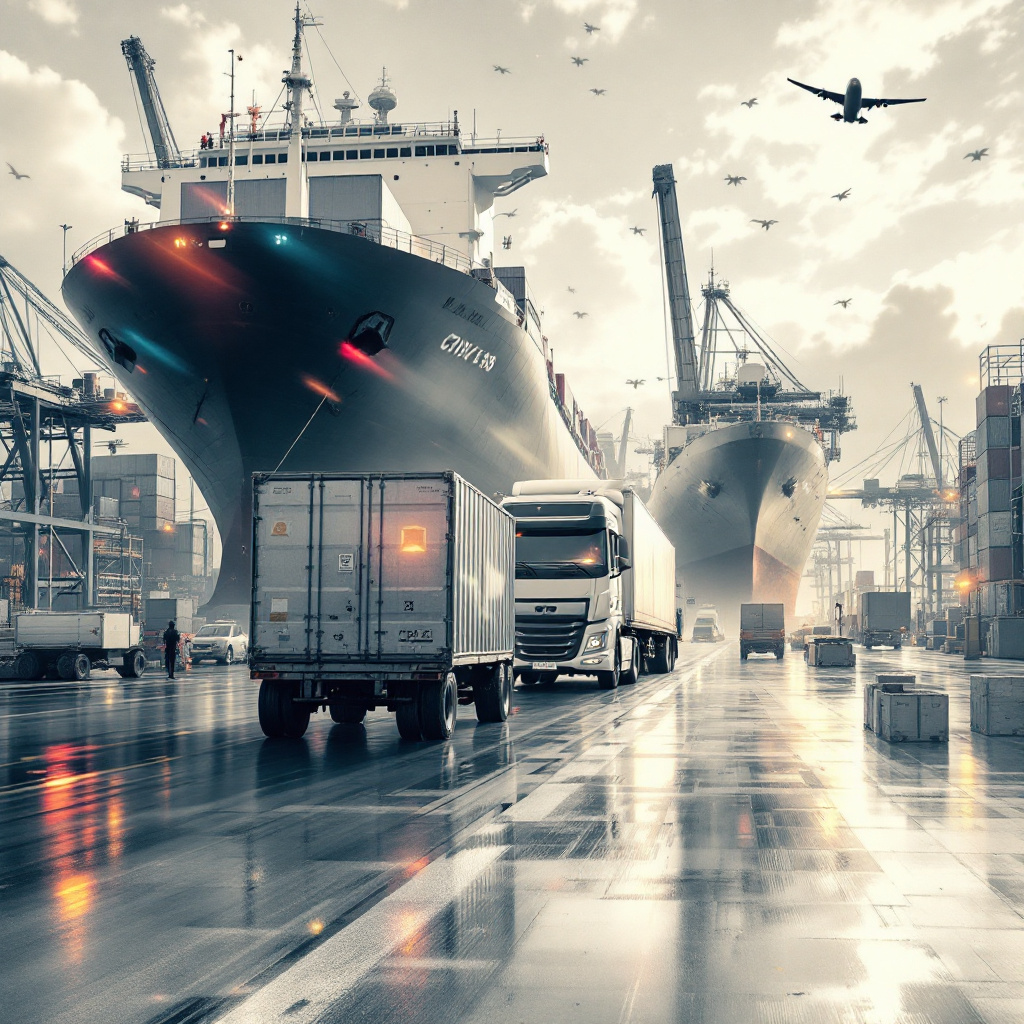The Wpływ COVID-19 na globalną logistykę był głęboki, zakłócając łańcuchy dostaw i zmuszając firmy do adaptacji. Blokady, ograniczenia w podróżowaniu i zmieniający się popyt konsumencki stworzyły poważne wyzwania. W tym artykule zbadano, w jaki sposób wpływ COVID-19 na globalną logistykę zmienił praktyki branżowe i jakie strategie zastosowały firmy, aby zbudować odporność.
Natychmiastowe zakłócenia łańcucha dostaw
Na początku pandemii zamknięcie fabryk wstrzymało produkcję na całym świecie. Pojawiły się niedobory podstawowych towarów, w tym środków medycznych i środków ochrony indywidualnej. Jednocześnie wzrósł popyt w handlu elektronicznym, co zwiększyło presję na sieci dostaw. Wpływ COVID-19 na globalną logistykę stał się oczywisty, ponieważ firmy walczyły o spełnienie wymagań dotyczących dostaw i utrzymanie zapasów.
Wyzwania związane z transportem
Przepustowość ładunków lotniczych gwałtownie spadła, ponieważ uziemione loty pasażerskie zmniejszyły przestrzeń ładunkową. Żegluga morska napotkała opóźnienia z powodu zatorów w portach i niedoborów kontenerów. Transport lądowy zmagał się z ograniczeniami transgranicznymi, co komplikowało transport ciężarowy. Zakłócenia te obnażyły słabości globalnej logistyki podczas pandemii COVID-19 i pokazały potrzebę dywersyfikacji. transport strategie.
Niedobory siły roboczej i środki bezpieczeństwa
Logistyka stanęła w obliczu niedoborów siły roboczej, ponieważ pracownicy zostali poddani kwarantannie lub pozostali w domu dla bezpieczeństwa. Magazyny i centra dystrybucyjne musiały przyjąć rygorystyczne protokoły zdrowotne, spowalniając operacje. Firmy zainwestowały w środki ochronne, elastyczność siły roboczej i automatyzację, aby utrzymać łańcuchy dostaw pomimo wpływu COVID-19 na globalną logistykę.
Przyspieszenie przyjęcia technologii
Aby zarządzać zakłóceniami, firmy przyjęły narzędzia cyfrowe. Śledzenie przesyłek w czasie rzeczywistym, prognozowanie popytu oparte na sztucznej inteligencji i zautomatyzowane systemy magazynowe stały się niezbędne w zarządzaniu kryzysowym. Logistyka dotknięta pandemią COVID-19. Magazyny wdrożyły robotykę i pojazdy sterowane automatycznie (AGV)zmniejszając zależność od siły roboczej i poprawiając wydajność. Blockchain zyskał popularność dzięki poprawie przejrzystości łańcucha dostaw.
Dostosowania strategii łańcucha dostaw
Wpływ COVID-19 na globalną logistykę ujawnił ryzyko związane z dostawcami z jednego źródła i modelami zapasów just-in-time. Wiele firm zdywersyfikowało dostawców, przyjęło nearshoring i zbudowało zapasy buforowe, aby zapobiec niedoborom. Korekty te miały na celu zrównoważenie wydajności z odpornością, zapewniając stabilność w niepewnych warunkach.
Wpływ na środowisko
Podczas gdy spowolnienie transportu tymczasowo zmniejszyło emisje, rozwój handlu elektronicznego zwiększył ilość odpadów opakowaniowych. Wpływ pandemii COVID-19 przyspieszył dyskusje na temat zrównoważonego rozwoju. Firmy koncentrują się obecnie na optymalizacji tras i ekologicznych opakowaniach, aby zrównoważyć wydajność i odpowiedzialność za środowisko.
Przyszłość globalnej logistyki po COVID-19
Wnioski z pandemii będą kształtować logistykę przez lata. Firmy będą nadal inwestować w narzędzia cyfrowe, automatyzacjai dywersyfikacja łańcucha dostaw. Zdolność do szybkiego dostosowania się do zakłóceń będzie miała kluczowe znaczenie dla odporności. Ściślejsza współpraca między rządami, firmami logistycznymi i dostawcami technologii pomoże w budowaniu bardziej gotowych na kryzys łańcuchów dostaw.
Wnioski
The wpływ COVID-19 przekształciły branżę, ujawniając słabe punkty i napędzając innowacje. Firmy, które przyjęły rozwiązania cyfrowe, zrestrukturyzowały łańcuchy dostaw i nadały priorytet elastyczności, są teraz lepiej przygotowane. Świat idzie naprzód, Globalna logistyka po pandemii COVID-19 będzie nadal ewoluować, zapewniając silniejsze i bardziej elastyczne sieci dostaw.

 Wpływ COVID-19 na globalną logistykę">
Wpływ COVID-19 na globalną logistykę">
